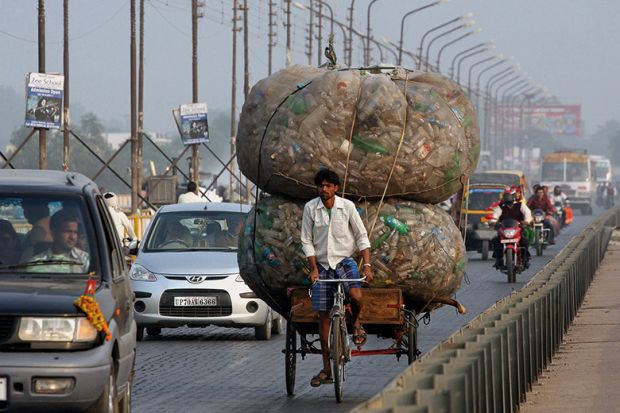“Urgent” action is required to stop Indian academics fuelling a multimillion-dollar predatory publishing industry, a new study says.
Some 35 per cent of papers published in cash-seeking, pay-to-publish journals are estimated to come from India – a proportion far in excess of its overall share of the world’s scholarly output (4.4 per cent in 2016, according to publisher Elsevier), latest research suggests.
New analysis funded by the Indian government has found that the bulk of India’s submissions to so-called “pseudo-journals” come from either small private institutions or government colleges, rather than established universities.
Some 69 per cent of Indian-authored papers in predatory journals come from these “second-tier” institutions, while state and central universities account for just 11 per cent and 3 per cent, according to the study, titled “India’s scientific publication in predatory journals: need for regulating quality of Indian science and education”, published recently in the journal Current Science.
Its authors – G.S. Seethapathy from Norway’s University of Oslo, J.U. Santhosh Kumar from Kuvempu University in Shankaraghatta, and A.S. Hareesha from the University of Agricultural Sciences in Bengaluru, both situated in south-west India – obtained the figures by examining Indian-authored articles in the nearly 1,000 titles listed by University of Colorado Denver librarian Jeffrey Beall as “potential, possible or probably” predatory journals prior to the list’s closure last month.
Assessing a total of 3,300 articles from 350 journals, the authors found that 51 per cent came from private or government colleges, often affiliated with state universities, while 18 per cent came from private universities or institutes.
When quizzed by the authors about why they had published in these journals (480 of 2,000 lead authors responded to email questions), some 70 per cent agreed that there is an “in-built pressure” to publish, with appointments, promotion and tenure often linked to publishing.
“Ever since academic performance indicators became the major criterion for appointments and tenure promotions, the number of research papers published by teachers…across India in predatory journals has increased,” they state.
“Publication has become the mantra and motto for academics, resulting in the rise of predatory publishing,” they add.
Young researchers are particularly vulnerable to this pressure, with many PhD programmes stating that doctoral students must have from one to three publications before they can defend their thesis, the authors add. Some 90 per cent of respondents mentioned their PhD as a reason for submitting to junk journals.
“We suggest that higher educational institutes in India may consider other alternatives as eligible criteria for PhD candidates to defend their thesis,” they say, adding that current rules incentivise doctoral students to “just publish something” without regard for scholarly quality.
This may contribute to India’s lowly global academic standing, it adds. The country is ranked 10th for overall scholarly output but 166th for average citations per paper.
Although just one in five respondents agreed that they had published in predatory titles, the study asserts that most authors are “well aware of the circumstances [of their journals] and take a calculated risk that experts who evaluate their publication lists will not bother to check the journal credentials”.
With 90 per cent of academics admitting that they paid for publication out of their own pocket, although the use of 112 research grants was also identified, the predatory publishing industry also had a financial cost for scholars, the paper says.
“There is an urgent need to develop a mechanism both by institutes and funding agencies to identify the quality of articles published by the respective institutes and researchers,” the paper concludes.
Register to continue
Why register?
- Registration is free and only takes a moment
- Once registered, you can read 3 articles a month
- Sign up for our newsletter
Subscribe
Or subscribe for unlimited access to:
- Unlimited access to news, views, insights & reviews
- Digital editions
- Digital access to THE’s university and college rankings analysis
Already registered or a current subscriber? Login








